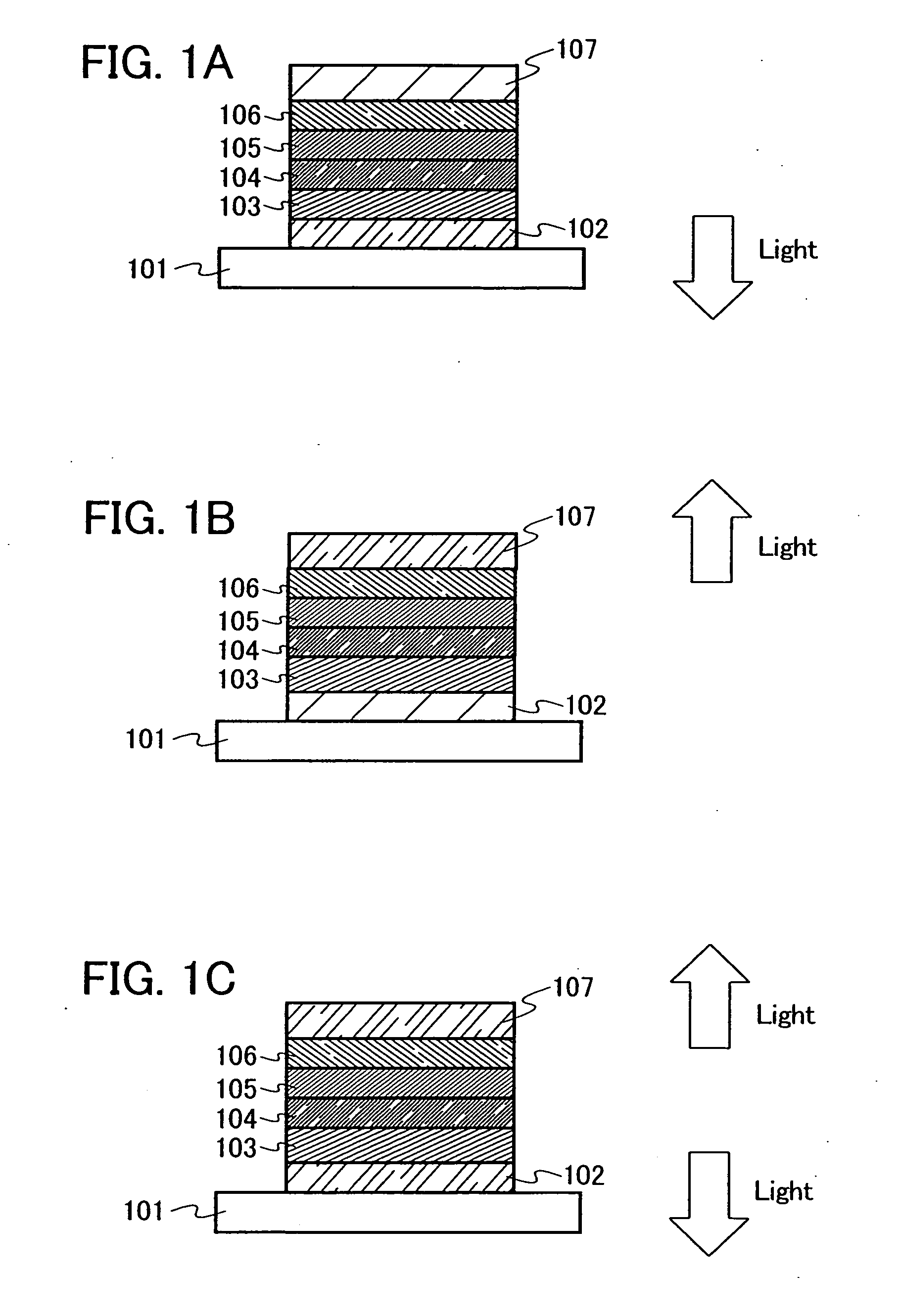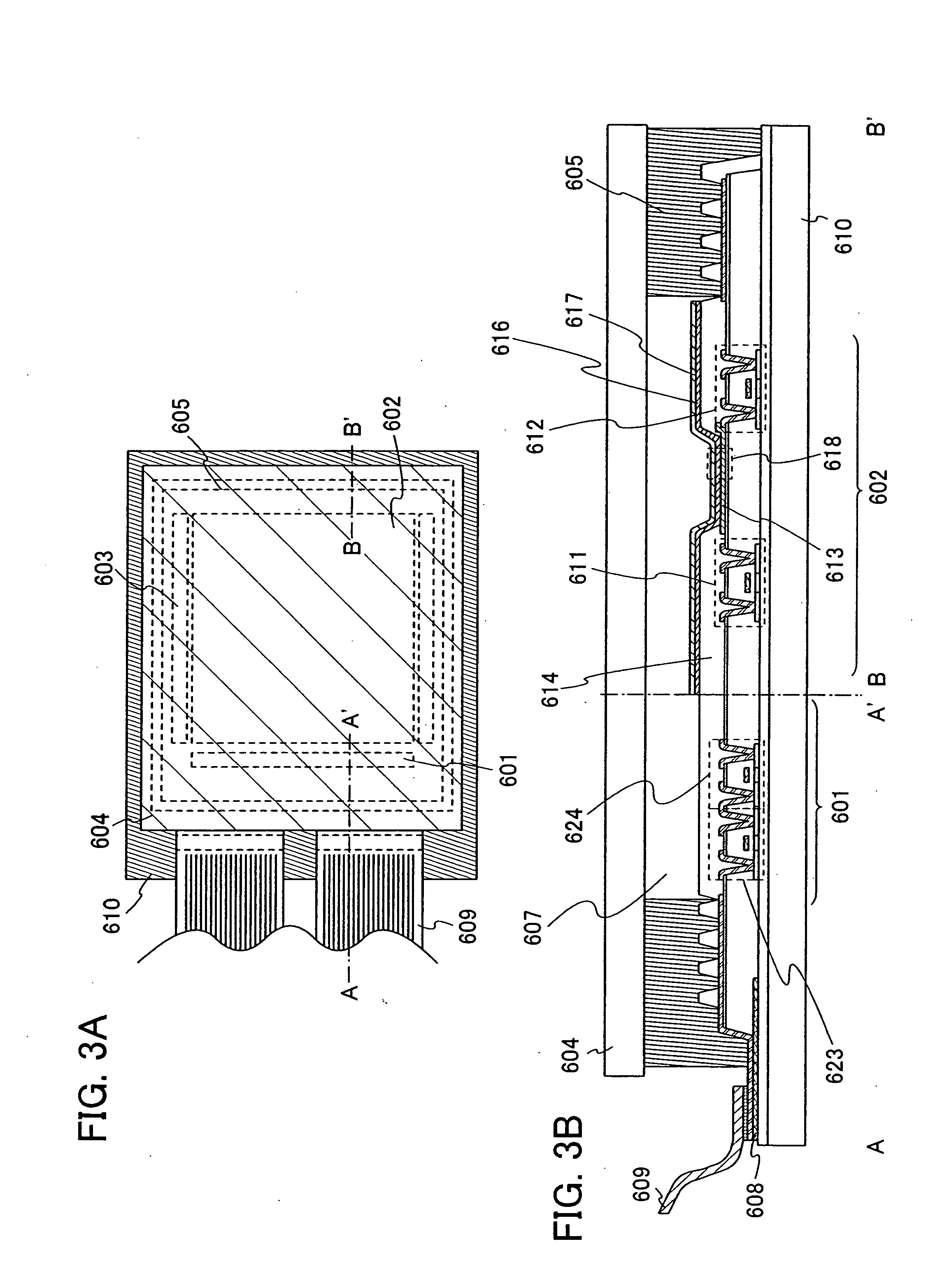Arylamine compound and synthetic method thereof
a technology of arylamine compound and synthetic method, which is applied in the direction of discharge tube luminescnet screen, organic chemistry, natural mineral layered products, etc., can solve the problems of material gradually deterioration, difficult to obtain character, and degradation of light emitting elements, etc., to achieve excellent hole transporting property, excellent hole injecting property, and high reliability
- Summary
- Abstract
- Description
- Claims
- Application Information
AI Technical Summary
Benefits of technology
Problems solved by technology
Method used
Image
Examples
embodiment mode 1
[0051] A secondary arylamine compound and a synthetic method thereof according to the present invention will be described.
[0052] The secondary arylamine compound of the present invention is represented by General Formula 1.
(In the formula, Ar11 is an aryl group having 7 to 25 carbon atoms or a heteroaryl group having 7 to 25 carbon atoms. Ar12 and Ar13 may be identical or different, and are individually either an aryl group having 6 to 25 carbon atoms or a heteroaryl group having 5 to 9 carbon atoms. X is either a bivalent aromatic hydrocarbon group having 6 to 25 carbon atoms or a bivalent heterocyclic group having 5 to 10 carbon atoms.)
[0053] As the aryl group having 6 to 25 carbon atoms, specifically, a phenyl group, a 4-biphenylyl group, a 1-naphthyl group, a 2-naphthyl group, a 9-anthryl group, a 9-phenanthryl group, a 1-pyrenyl group, a 9,9′-dimethyl-2-fluorenyl group, a 9,9′-diphenyl-2-fluorenyl group, a spiro-9,9′-bifluorene-2-yl group, or the like can be used. Further,...
embodiment mode 2
[0066] Embodiment Mode 2 will describe a material for a light emitting element, which can be obtained by using a secondary arylamine compound of the present invention.
[0067] As one mode of the material for a light emitting element using the secondary arylamine compound shown in Embodiment Mode 1, a carbazole derivative represented by General Formula 4 can be used.
(In the formula, Ar11 is an aryl group having 7 to 25 carbon atoms or a heteroaryl group having 7 to 25 carbon atoms. Ar12 and Ar13 may be identical or different, and are individually either an aryl group having 6 to 25 carbon atoms or a heteroaryl group having 5 to 9 carbon atoms. X is either a bivalent aromatic hydrocarbon group having 6 to 25 carbon atoms or a bivalent heterocyclic group having 5 to 10 carbon atoms. R1 is any one of hydrogen, an alkyl group having 1 to 6 carbon atoms, an aryl group having 6 to 25 carbon atoms, a heteroaryl group having 5 to 9 carbon atoms, an arylalkyl group, or an acyl group having ...
embodiment mode 3
[0084] One mode of a light emitting element which uses the material for a light emitting element obtained by using a secondary arylamine compound of the present invention will be described with reference to FIG. 1A.
[0085] The light emitting element of the present invention includes a plurality of layers between a pair of electrodes. The plurality of layers are stacked layers formed by combining layers containing a substance having a high carrier injecting property or a high carrier transporting property, so that a light emitting region is formed in a place which is away from the electrodes, that is, so as to perform recombination of carriers in a portion which is away from the electrodes.
[0086] In this embodiment mode, the light emitting element includes a first electrode 102; a first layer 103, a second layer 104, a third layer 105, and a forth layer 106 which are sequentially stacked over the first electrode 102; and a second electrode 107 further provided thereover. The followi...
PUM
| Property | Measurement | Unit |
|---|---|---|
| Electrical resistance | aaaaa | aaaaa |
| Light | aaaaa | aaaaa |
Abstract
Description
Claims
Application Information
 Login to View More
Login to View More - R&D
- Intellectual Property
- Life Sciences
- Materials
- Tech Scout
- Unparalleled Data Quality
- Higher Quality Content
- 60% Fewer Hallucinations
Browse by: Latest US Patents, China's latest patents, Technical Efficacy Thesaurus, Application Domain, Technology Topic, Popular Technical Reports.
© 2025 PatSnap. All rights reserved.Legal|Privacy policy|Modern Slavery Act Transparency Statement|Sitemap|About US| Contact US: help@patsnap.com



